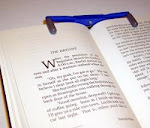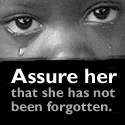Here is the synopsis of this book :
:
Are you putting your whole faith in God but living as if everything is up to you?
Craig Groeschel’s personal journey toward an authentic, God-honoring life and the lessons he learned along the way are more relevant than ever. From his family and his upbringing, to the lackluster and even diametrically opposed expressions of faith he encountered, Groeschel’s frank and raw conversation about our Christian Atheist tendencies and habits is a convicting and life-changing read.
This honest, hard-hitting, and eye-opening look into the ways people believe in God but live as if he doesn’t exist is a classic in the making.
Here is the biography for the author:
Craig Groeschel is the founding and senior pastor of LifeChurch.tv, a pace-setting multicampus church, with over eighty weekly worship experiences in fourteen locations, including an online campus. Craig, his wife Amy, and their six children live in the Edmond, Oklahoma area where LifeChurch.tv began in 1996. Craig is the author of several books, including Chazown and It
and It .
.
In ‘A Letter to the Reader,’ Pastor Groeschel talks about the fact that Christian Atheists are everywhere:
Welcome to Christian Atheism, where people believe in God but live as if he doesn’t exist. As much as I don’t want to admit it, I see this kind of atheism in myself. People might assume that a pastor wouldn’t struggle with any form of atheism, but I certainly do. Sadly, Christian Atheism is everywhere. There has to be a better way to live.
This book is for anyone courageous enough to admit to their hypocrisy. I hope it pushes you, challenges you, and disturbs you. And if you’re honest before God – as I am trying to be – perhaps together we can shed some of our hypocrisy and live a life that truly brings glory to God. (pp. 14-15)
I so appreciate when people in positions of Christian leadership – particularly pastors – are honest enough to admit that they are only human and are flawed just like the rest of us. So many Christians have left the faith and the church because they placed humans on a pedestal, then were greatly disappointed when these humans fail in some way. That was a good opening to the book; I was excited to keep reading!
Craig explains how he came to faith when he was in college:
After finishing Matthew, we discovered that Mark, Luke, and John had several of the same stories. Three chapters into Acts, we got bored and skipped to Romans. Midway through Romans, I got so excited that I started reading ahead. When I reached Ephesians, I encountered two verses that would forever change my life: “For it is by grace you have been saved, through faith – and this is not from yourselves, it is the gift of God – not by works, so that no one can boast.” Could this be true? We’re saved by God’s grace and his grace alone? It’s not by my works? Why didn’t anyone tell me? (p. 24)
That is the best news in the Bible!
Craig’s personality type and wiring sent him in a certain direction with his faith:
My mission had become a job. Instead of studying God’s Word out of personal devotion, I studies only to preach. Instead of preaching messages to bring glory to God, I preached to bring people to church. I promised hurting people I would pray for them, but I usually didn’t follow through.
At the age of twenty-five, I was a full-time pastor and a part-time follower of God. (p. 26)
So many churches seem to be started by self-starting, highly motivated men. Pastor Groeschel seems to be one of them. Those types of individuals really need to be careful of their motives – that they are God-honoring, not self-edifying. Fortunately, Craig saw his tendencies, and seems to have taken steps to keep himself on the God track, not the man track.
Pastor Craig explains what he feels when he is in communion with God:
It’s like somehow my spirit is connected to him, and I can hear what he’s saying. There’s kind of a buzz, a constant conscious awareness that as my day unfolds, God is orchestrating things and sending people into my life. That’s doing life with God.
At other times, God may not feel as close. But by faith, I know he is with me. No matter what I feel, I hold the assurance that God never leaves me. And he won’t leave you. (p. 39)
When we feel far away from God, we can always go back to Him:
If you don’t know him, you can. If you used to be close, you can be close again. Getting to know God is not difficult, and it isn’t about a bunch of rules. Yes, God wants your obedience, but he wants your heart even more. He says over and over again that if you seek him, you will find him (Deut. 4:29: Jer. 29:13; Matt. 7:7-8; Acts 17:27). You can find him by reading your Bible; he’s been there all along. And when you begin to seek him, you’ll find that he’s already running toward you, his beloved child. Get to know him and allow his presence to impact every area of your life, every day. (p. 43)
Craig explains that shame keeps many Christian Atheists separated from God. King David was a perfect example:
David didn’t try to pretend he was innocent – he was honest. But neither did he allow the guilt trap to rob him – or God – of the joy of a life redeemed and restored. He knew he couldn’t change the past, but he hoped he could change the future.
When we hope in what God has promised – commanded – our hope is the same as certainty. (p. 53)
Many Christian Atheists have a hard time believing God loves them. They don’t need to earn His love:
In short, there’s nothing we can do to earn God’s love. We are already and always loved simply because God made us and loves each and every one of his creations. There’s nothing we can do to get God to love us more, and there’s nothing we can do to cause God to love us less. (p. 66)
Many Christian Atheists don’t think prayer is effective for them, so they don’t pray. Craig explains how prayers work, and that we can always go back to Him:
God will answer some prayers the way you want, and others he won’t. That’s the mystery of prayer. Even though we can’t reduce prayer to a formula, we are instructed to pray honestly, openly, and continually. Part of our prayer lives will be not only talking to God but also listening for his voice. We communicate with our God who is always present, always listening, and always caring – and the One who does all this is love.
Why not start praying now? Talk to God about whatever is on your heart. Cry to him if you need to. If you’re hurting, unload on him like Habakkuk did. He can handle it. If you feel alone, ask him to comfort you with your presence. If you’ve been away for a while, tell him you’re ready to come home. If you’re angry, let it rip. (p. 90)
One of the hardest things for any of us to do is to forgive. Craig described what happened in his life when he finally let a man who molested his sister (and many other young girls) off the hook, and followed God’s directive to forgive as he was forgiven (Colossians 3:13):
I didn’t realize that Max’s sickness had advanced. He was losing the battle with muscular dystrophy. In fact, at the time he received the letter [of forgiveness that Craig that written], Max was under the care of a hospice nurse, waiting for inevitable death.
Months after Max passed away, his nurse sent us a letter asking she could talk to us. When we agreed, she told us about the last days of Max’s life, believing we needed to know. The caretaker explained that Max’s eyesight had deteriorated and that he had asked her to read him my note. Although she wasn’t aware of what he had done (and I never told her), it was obvious to her that he had done something grievously wrong. According to the nurse, he listened with tears streaming down his face. He asked her to pray the prayer with him. She recalled that his whole countenance changed as he asked Christ to forgive him and make him new. He died a few days later.
We Christian Atheists can rationalize as many excuses as we need to avoid forgiving. We Christians, forever, can find in God the sheer strength to battle through the feelings of anger, hatred, and bitterness, and forgive our way back to the cross. That’s where Christ forgave us. And that’s where, by faith, we can find the ability to forgive those who’ve wronged us. (pp. 121-122)
I cried when I read that one. It makes it easier for me to forgive someone who has wronged me in a far less egregious way, yet I’ve still held onto the anger and bitterness. It is time for me to release that person – and me.
Many Christian Atheists use the excuse that they can’t change. Craig explains that often we can’t change under our own power; we need a stronger and higher power:
If you believe you can’t change, you’re right – sort of. Your strength is limited. Your willpower isn’t bottomless. Your determination will eventually run dry. That’s why to change for good you will need the power of the only one who is good – Christ!
In Colossians 1:29, Paul says, “To this end I labor, struggling with all his energy, which so powerfully works in me.” The word translated as “struggling” is the Greek word agonizomai (ag-oh-NID-zohm-ah-hee). It means to struggle or compete for a prize. It literally means to compete with an adversary – and win. It’s important to notice how we’re supposed to struggle, to fight. The Bible says we agonizomai with “all Christ’s energy.” We change by his power, not ours. (pp. 138-139)
This reminds me of one of my favorite verses, Philippians 4:13 – “I can do all things through Christ who strengthens me.” Knowing we have access to all of Christ’s power makes us excuses pretty weak, don’t they?!
Worrying can be a big issue for many Christian Atheists. We really need to follow God’s advice:
…Philippians 4:6-7 tells us, “Don’t worry about anything.” And it doesn’t just tell us what not to do. It tells us what to do as well. “Don’t worry about anything; instead, pray about everything. Tell God what you need, and thank him for all he has done. If you do this, you will experience God’s peace, which is far more wonderful than the human mind can understand. His peace will guard your hearts and minds as you live in Christ Jesus” (NLT). That make it sound so easy, but if we do what’s wise, we can peacefully leave the rest to God.
If you do catch yourself worrying even after you’ve done what was wise, remember that God is bigger than our problems, and that he wants us to hand them over to him. Worry then becomes a signal alerting us that it’s time to pray. Any time you hear the alarm start to blare, stop. It’s time to stop worrying and start praying. (p. 153)
Craig offers the following advice to conclude his book:
Are you a Christian Atheist? Do you believe in God but live as if he doesn’t exist? I am praying that God leads you beyond first-line faith. Believing in Christ enough to benefit from him is at best shallow Christianity. At worst, it’s empty, deceptive religion, leading many down the broad path to eternal devastation.
Step across the first line – but don’t stop there.
Line two will feel much better than line one. Believing in Christ enough to contribute comfortably may seem right. But even that is a human-centered Christianity. Keep moving.
Consider the third line. Ask what separates you from a wholly surrendered, Spirit-filled, kingdom-driven life. Weigh your options. Life as it is…or life as it could be.
Consider the costs.
Do whatever it takes.
Step across the line.
Welcome to true Christianity. (p. 240)
What a terrific book! I thought 'The Christian Atheist ' included a lot of practical information. And, again, I appreciated the honesty and openness that Pastor Groeschel provided in the book. I recommend this book to any Christian; we all have a little bit of atheism left over from our unsaved days.
' included a lot of practical information. And, again, I appreciated the honesty and openness that Pastor Groeschel provided in the book. I recommend this book to any Christian; we all have a little bit of atheism left over from our unsaved days.
You can order this book here .
.
This book was provided by Zondervan Publishers for review purposes.




































.jpg)






